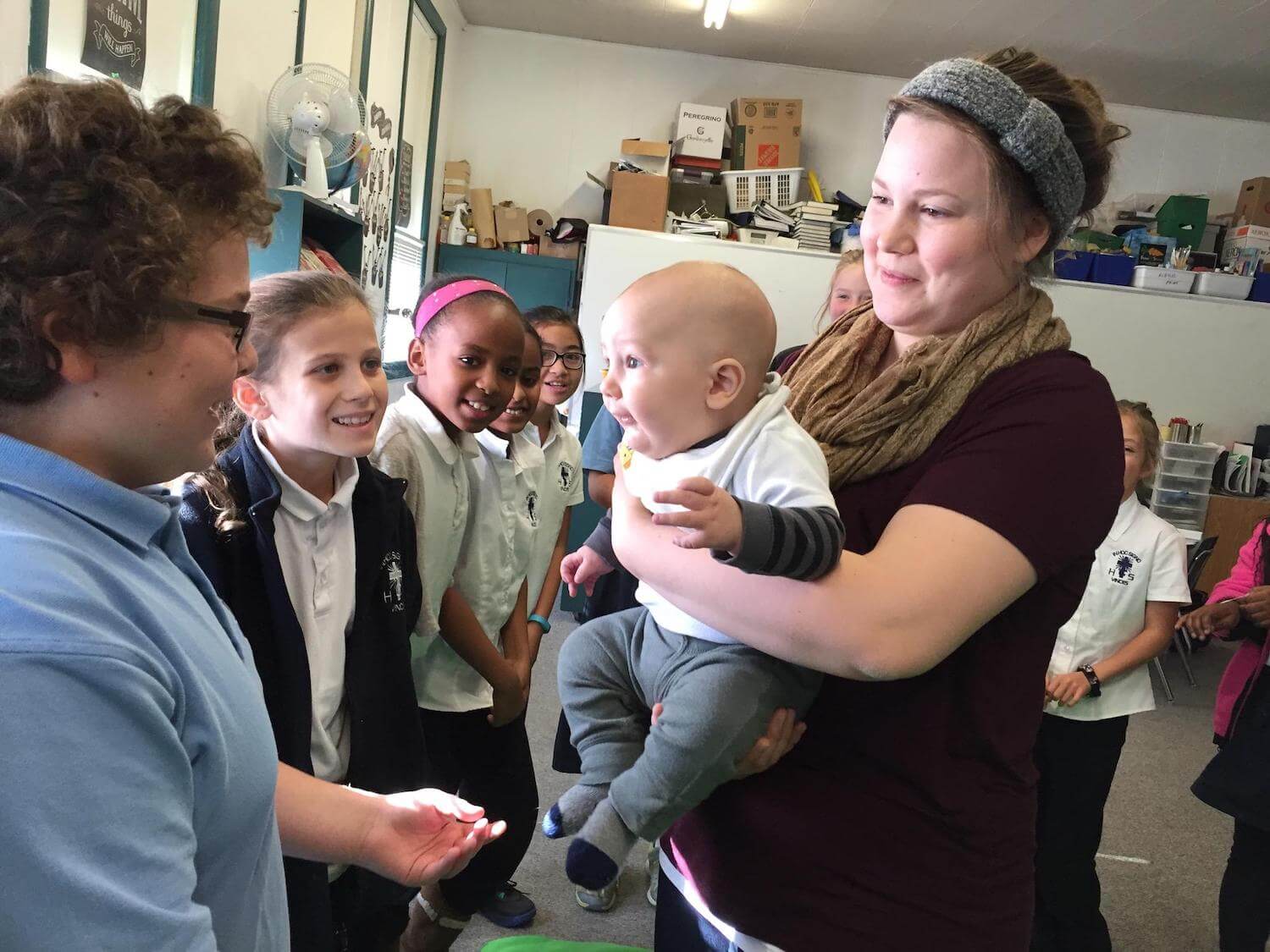One of the benefits of our program is that the teacher doesn’t teach it. That may sound weird. But we consider it a gift to the teacher. We train Instructors to deliver our curriculum. And the teacher gets to watch. Getting time to observe students is a gift. Often the Instructor will ask the teacher to take photos of the students during the visits with their parent and baby. And often teachers tell us they see sides of their students they don’t see during the regular school day – their vulnerabilities, their fears, their joys, their anger, their love of love.
It’s perspective taking, right? One of the core elements of empathy. Learning to understand students on another level. Learning about their temperaments and how they work. Getting to observe and reflect and participate in the program, instead of running it, gives teachers perspective.
Another dimension to this is allowing teachers time to consider their own temperaments. A classroom culture is a dynamic swirl of different temperaments – and how often do teachers get a chance to consider how they bring out the best (or maybe worst) in their students, or their students bring out in them?
Mary Gordon, Roots of Empathy’s Founder/President, is speaking at the Leadership Committee for English Educators in Quebec this week. And she’s talking about teachers and wellbeing. The statistics on teacher burnout are well known. A recent fascinating study found the more stressed a parent is (and, arguably, a teacher), the less attuned they are to their child. So, teacher wellbeing is getting more attention. Because teacher wellbeing plays an important role in the development of a healthy learning environment.
Wellbeing gets talked about a lot. Its power sometimes gets lost in its trend. But there is something profound and fundamental about our beings being well, isn’t there? Various experts tinker with different parts of wellbeing, and every one seems to have a different definition. The word wellbeing may be difficult to define itself, but its elements aren’t. It all adds up to wellbeing. Just like empathy – its elements are easier to quantify than empathy itself – but, you know it when you see it. A teacher with a sense of wellbeing creates an atmosphere of wellbeing. The alchemy of it means a healthy learning environment for everyone and a connection.
Mary was asked to contribute a chapter to the book Crisis of Connection produced by PACH (Project for the Advancement of Our Common Humanity) at NYU. Roots of Empathy was exemplified as a solution to the 21st century’s “’crisis of connection’ stemming from growing alienation, social isolation, and fragmentation characterizes modern society.” Here’s an excerpt of what she wrote:
Children wear their pain in their behavior. Challenging behavior should be met not with exclusion but with inclusion and understanding…
Building connections between teachers and students is a positive step in building connection in society. Imagine if teachers developed the capacity to understand their students’ temperaments, to see their vulnerabilities, to see where they’re coming from. Roots of Empathy gives teachers the chance to reflect on their students’ temperaments, but also their own. Are they too sensitive? Do they respond intensely to certain things? Are they calm? It’s good to know what they’re sensitive about. It’s good to know if they’re very emotionally reactive, and it’s good to know if they have difficulty down-regulating their reactions. They need to know how to handle themselves. They have to acknowledge themselves.
And it’s nowhere in teacher preparation. Nowhere is there any sense of “Know Thyself.” It’s not the curriculum teachers bring to the children. It’s themselves. A child starts first grade not with reading, writing, and math, but with her teacher. And how that teacher responds to that child is pretty much how that child will see herself.
I believe the classroom is a society. We build a community in that classroom. It’s the second most influential community in a child’s life. The ethic of care comes alive in that classroom, or not.
At our speakers series and at our research symposia we have heard many times that it took just one teacher to make a difference in their lives – one teacher who listened, understood, knew them, empathized, and who changed their lives. One speaker said she became a teacher because she had only one teacher, one, who was kind. And that made all the difference. We like to say we help children grow their empathy not just for others, but for themselves. Teachers who invest in their own wellbeing are being kind and empathic to themselves…but also to their students. And they can change the world.


